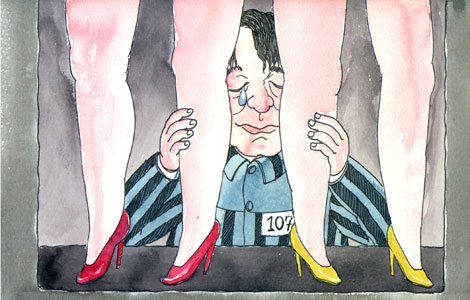Financial reform move
Updated: 2013-07-22 08:23
(China Daily)
|
||||||||
As the country continues its much-needed market-oriented reform of the financial sector, the central bank made a milestone move on Friday to remove controls on the lending rates of commercial banks.
The move, which allows the banks to lend at a rate lower than the previous floor of 70 percent of the benchmark rate, shows the resolve of the authorities to press ahead with financial reforms.
As GDP growth has slowed to 7.5 percent year-on-year in the second quarter, a low rate of growth rarely seen in the past three decades, calls for bailout measures, such as a major monetary stimulus, have been on the rise.
The authorities have, however, opted to abandon their previous monetary expansion-based philosophy in their attempt to boost the economy. Instead, they have made efforts to improve the efficiency of the financial sector, in order to lay the groundwork for future economic restructuring.
As shown by the refusal to offer a helping hand during the temporary money crunch in the interbank market in June, it is clear that policymakers will not repeat the past practice of injecting money into the economy to keep it growing.
The elimination of the lending rate floor is another unequivocal sign that policymakers will remain on the track of reform.
After the removal of the floor, commercial banks will become more independent players in deciding the rates for their loans in accordance with their operational strategies and market conditions. This will help improve their credit allocation efficiency and make them more capable of pricing risks. They will have to compete with each other to win the favor of big enterprises.
It is only the first step in China's interest rate liberalization drive. Policymakers are yet to remove the ceiling for deposit rates.
With the deposit rates kept under an officially set ceiling of 1.1 times the benchmark rates, commercial banks can still benefit from the large gap between lending and deposit rates and lack an incentive to improve their competitive edge.
It is understandable that policymakers have chosen a gradual approach to interest rate liberalization. But it is advisable that they make preparations, such as the establishment of a deposit insurance system, before they move to free up the deposit rates, because such a reform could cause uncompetitive financial institutions to go bankrupt.
(China Daily USA 07/17/2013 page11)
Most Viewed
Editor's Picks

|

|

|

|

|

|
Today's Top News
Live Report: 47 dead, 296 injured in earthquake
Hard landing of China economy no topic at G20
US Navy drops bombs on Australia's reef
Woman jailed in Dubai after reporting rape
Guangdong to probe airport bomber's allegations
Police meets GSK representative after scandal
US protests demand 'justice for Trayvon'
Chinese admiral to visit the US
US Weekly

|

|














